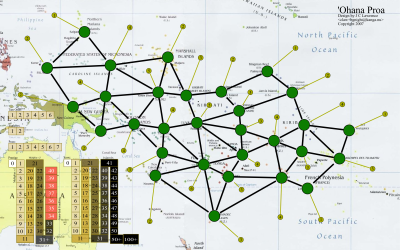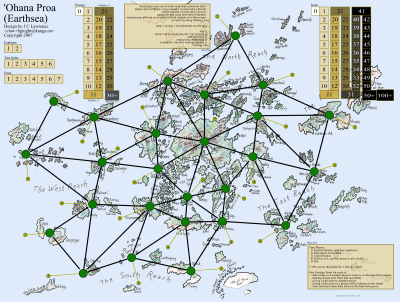Go out and die my son
I’ve been toying with this game design for a few weeks. The primary thematic element involves running children across minefields. Those that survive the trip get to escape to presumably live good lives. Those that don’t, well, don’t. The players effectively take the part of family heads determining which and how many of their own children to send out when for potential slaughter or safe passage (they have lots of kids). Key elements are that the game is semi-cooperative, explicitly zero-sum, inferential deduction of likely landmine locations, setting up other player’s kids to clear the path by stepping on and blowing up the landmines for your kids to then follow safely, deliberately sacrificing your own early kids in order to determine and secure a path for later stock etc. The goal (scoring) is simple maximal genetic survival, primarily of direct family then extended and then remote family.
A minor goal of the game would be to provide an opportunity for discussion and education on topics ranging from landmines to exploitation of children, sacrificial costing, personal versus family/group survival, lose-lose decision structures, the meaning of personal sacrifice, relativism etc.
Basic premise:
- Hex map
- All hexes contain tokens. Tokens are either mines or dummy mines. Tokens are face down.
- One military player against the rest. This player plays the side of the military. (In a large player count game there may be two such players?)
- Players have two types of tokens (direct family and indirect family)
- Players start at locations along one edge of the hex map.
- Two types of locations: locations exclusive to each player and locations which start out with a mix of tokens (lids) for different players.
- Initial allocation of tokens to locations is done round-robin during setup.
- After setup players round-robin give each other relationship markers for in-laws and cousins (one of each)
- Each location has a token pool and a queue
- Turn order is variable. Details TBD.
- On their turn a player may do one of 3 things:
- Move one of their kids already on the minefield N steps across the minefield, or move one of their kids at the front of a location queue N steps into the minefield. (N/2 if injured kid)
- Acquire more kids
- Move a token in a location (their’s or other’s) from the pool to the queue
- Each action may be chosen a limited number of times. Once two actions are exhausted all actions reset their use counters.
- When two actions exhaust their use counters military player gets to (secretly) add more mines to the minefield
- Initial mines are placed secretly.
- Mines come in two types. Simple kill mines and scatter mines (kills and scatters half-kill mines in surrounding hexes. The player’s stock of mines is public.
- Player also has dummy mines.
- At the end of the turn the player must feed their kids. Food resources are proportional to family death rate: the more die in your family the more food received from charity organisations
- When a kid moves on the field the military player states for each hex entered whether a mine there explodes. If a mine explodes the military player must reveal the mine, deliver the appropriate damage, and distribute new half-kill mines as applicable.
- Military player receives new stock of mines proportional to number of kids killed
- Game ends when all of one family has been eliminated or made it across the minefield.
- Players score points for members of their (extended) family that made it safely across, less points for cousins and less again for in-laws (the other players). Player with the most points wins.
- Kids behind the minefield do not score.



